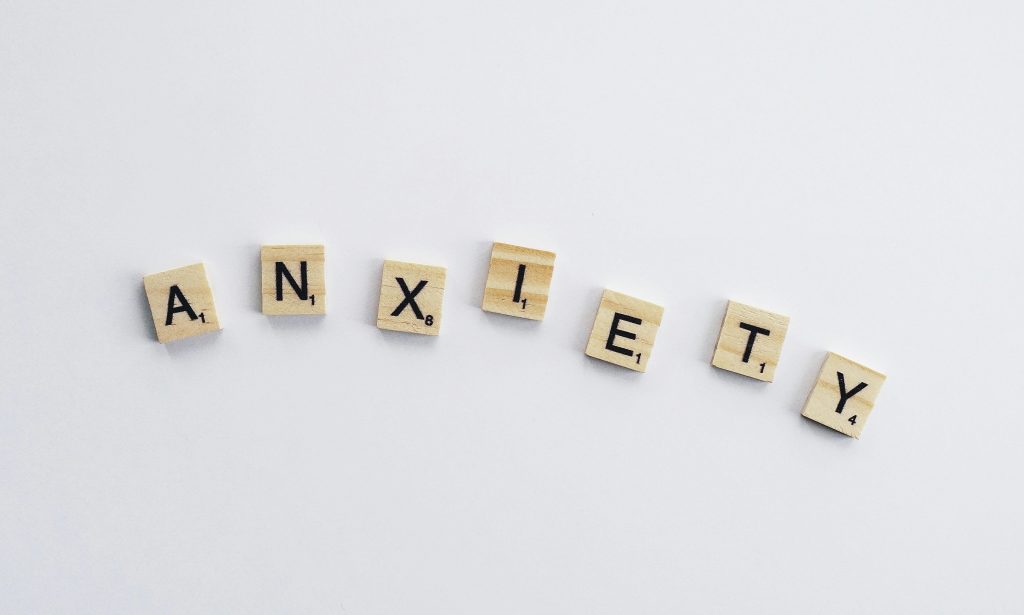Your heart races. Your palms sweat. Your mind spins with what-ifs that feel more real than the ground beneath your feet. You’re not in danger—but your body screams otherwise.
This is anxiety—the world’s most common mental health struggle, affecting 284 million people globally. Yet fewer than 40% of sufferers get help, often because they don’t recognize the signs or know how to cope without medication.
This guide cuts through the confusion. You’ll learn:
- How to spot anxiety’s hidden symptoms
- The real biological causes behind the panic
- Science-backed natural coping methods that work
What Anxiety Really Feels Like (Beyond “Just Worrying”)
Anxiety isn’t just nervousness. It’s your body’s alarm system stuck in overdrive. Symptoms fall into three categories:
1. Physical Symptoms
- Racing heart (even at rest)
- Shortness of breath (like breathing through a straw)
- Stomach issues (nausea, IBS flare-ups)
- Trembling or sweating (without heat/exertion)
Key fact: Anxiety triggers the same fight-or-flight response as facing a bear—but there’s no actual threat.
2. Emotional Symptoms
- Constant dread (feeling “doomed” without reason)
- Irritability (snapping over small things)
- Feeling detached (like you’re watching yourself from afar)
Shocking stat: People with anxiety are 3-5x more likely to visit the ER for unexplained pains (headaches, chest tightness).
3. Behavioral Symptoms
- Avoiding places/activities (due to fear of panic)
- Over-preparing (rehearing conversations for hours)
- Seeking constant reassurance (“Do I seem sick to you?”)
The vicious cycle: These behaviors relieve anxiety short-term but reinforce it long-term.
Why Anxiety Happens: The Science Behind the Storm
Your brain isn’t broken—it’s overprotective. Three key systems misfire:
1. The Amygdala (Your Alarm Bell)
- Normally: Activates only for real threats
- With anxiety: Goes off for imagined threats (e.g., “What if I fail?”)
Brain scan studies: Anxious people show 30% more activity in the amygdala.
2. The Prefrontal Cortex (Your Brake Pedal)
- Normally: Calms the amygdala with logic (“That noise is just the wind”)
- With anxiety: Struggles to override false alarms
3. The Nervous System (Your Body’s Messenger)
- Normally: Returns to calm after danger passes
- With anxiety: Stays in “high alert” (chronic muscle tension, insomnia)
Root causes fueling this cycle:
- Genetics: If a parent has anxiety, your risk increases 30-40%
- Childhood trauma: Abuse/neglect changes brain development
- Modern lifestyle: Constant notifications, poor sleep, and isolation overstimulate the nervous system
Natural Anxiety Relief: Rewiring Your Brain Without Medication
1. The 5-4-3-2-1 Grounding Technique (For Panic Attacks)
When overwhelmed:
- Name 5 things you see
- Touch 4 objects (notice textures)
- Identify 3 sounds
- Find 2 smells
- Name 1 thing you taste
Why it works: Forces your brain to focus on the present (not hypothetical fears).
2. Diaphragmatic Breathing (The Instant Calm Switch)
- Inhale deeply through nose (4 sec)
- Hold (2 sec)
- Exhale slowly through mouth (6 sec)
- Repeat 5x
Study result: This method reduces anxiety symptoms by 30% in minutes by activating the parasympathetic nervous system.
3. The Worry Window (Containing Anxious Thoughts)
- Set a daily 15-minute “worry time” (e.g., 5 PM)
- When anxious thoughts arise, say: “I’ll address this at 5 PM”
- Use the time to either:
- Problem-solve actionable worries
- Acknowledge and release hypothetical ones
Effectiveness: Cuts daily worry time by 50% in 3 weeks.
4. Progressive Muscle Relaxation (For Physical Tension)
- Tense then release muscles (toes → calves → thighs → fists → shoulders)
- Focus on the contrast between tension and release
Bonus: Lowers nighttime cortisol (stress hormone) by 25% when done before bed.
Lifestyle Changes That Reduce Anxiety Long-Term
1. Fix Your Gut-Brain Connection
- Eat probiotic foods (yogurt, sauerkraut) – gut bacteria produce 90% of your serotonin
- Reduce sugar (spikes and crashes worsen anxiety)
2. Move Your Body Differently
- Walking in nature lowers rumination (repetitive negative thoughts)
- Weight training boosts GABA (a calming neurotransmitter)
3. Master Your Sleep
- Keep a consistent sleep schedule (even weekends)
- Deep sleep removes brain toxins linked to anxiety
Critical stat: Just one night of poor sleep increases anxiety by 30% the next day.
When to Seek Professional Help
Try natural methods for 6-8 weeks. If still struggling:
- Therapy: CBT (Cognitive Behavioral Therapy) has 70% success rate for anxiety
- Medication: SSRIs can help rebalance brain chemistry (but discuss side effects)
Red flags needing immediate attention:
- Panic attacks lasting over 20 minutes
- Avoiding work/school due to anxiety
- Suicidal thoughts
That voice whispering “You can’t handle this”? It’s wrong. You’ve survived every anxious moment so far—proof you’re stronger than you think.
Anxiety isn’t weakness. It’s your body’s ancient survival mechanism—one that doesn’t realize the modern world rarely requires fight-or-flight.
So tonight, when the what-ifs come knocking, try this instead: Place a hand on your chest. Feel your heartbeat. That rhythm has carried you through every storm before. It will carry you through this one too.
Because the opposite of anxiety isn’t calm—it’s trust. Trust in your resilience. Trust that even when the ground feels shaky, your feet will find their way.
And they will.

